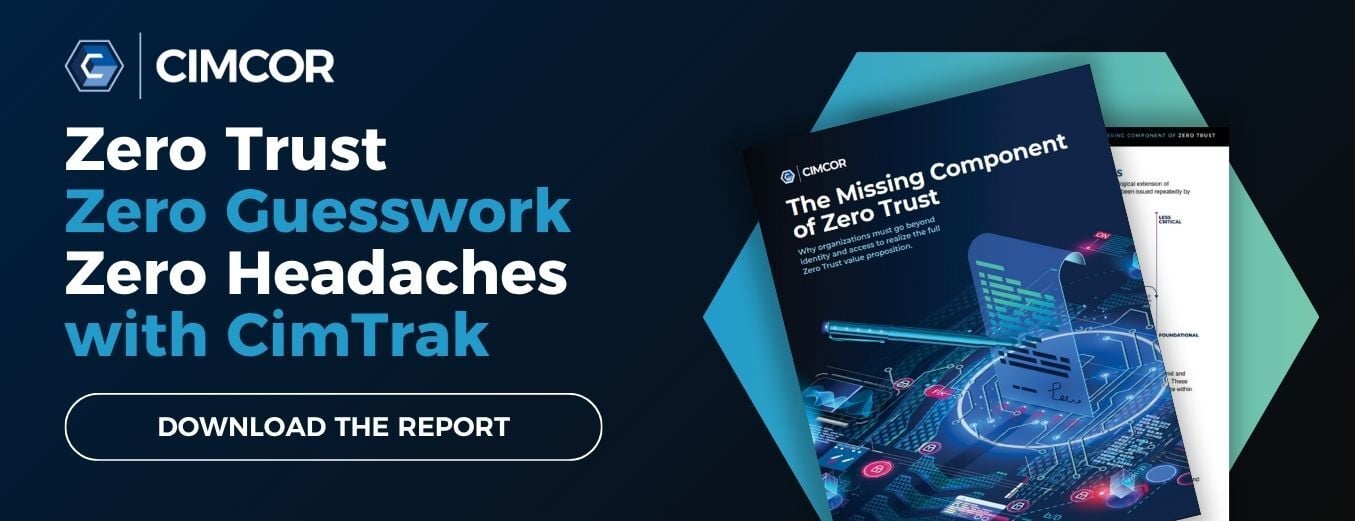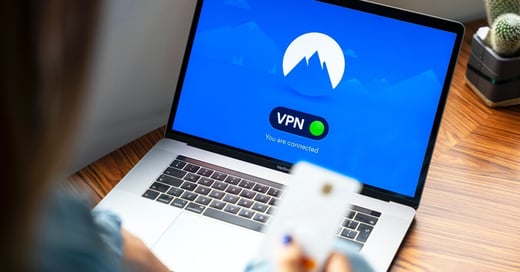What can make a data breach even more expensive? Remote access.
Research indicates that the average cost of a data breach is $1.07M higher when remote work is a core factor of the breach. In short, if your workforce has gone into a hybrid or remote schedule, effective data security is more vital than ever.
Where there’s remote access, there come additional challenges. Overcoming these challenges is crucial in keeping your company’s data safe—and your workforce productive. With workers operating on personal devices, on unsecured networks, and more, maintaining security while avoiding locking up your workers’ access with too-strict micro-segmentation can be tricky.
This post will walk you through the challenges of providing remote support in a Zero Trust architecture and how to overcome those challenges.
Origins of Zero Trust in Cybersecurity
Before we discuss the challenges associated with remote support in Zero Trust, let’s first discuss Zero Trust in general.
What is Zero Trust in cybersecurity? Zero Trust is a network security model that removes all implicit trust from your cybersecurity infrastructure.
Rather than mainly reinforcing protection around the external perimeter of your network, the Zero Trust model focuses on continuously verifying users and permissions to ensure that your organization’s data is secure from unauthorized use stemming from internal and external threats.
Zero Trust is a strategy rather than a solution, meaning that it requires constant upkeep, monitoring, and maintenance. This model was born in 2010, named by an analyst at Forrester Research. The model then gained attention when Google announced its decision to implement Zero Trust in its network.
With more recent changes to the business environment, such as the steep increase in remote and hybrid work in the wake of the COVID-19 shutdowns, network security is even more challenging to manage than ever before. With more workers using their own devices or accessing company resources from unsecured networks, IT teams must adopt agile and iterative solutions to cybersecurity.
The Zero Trust model's micro-segmentation, constant verification, and change control processes provide additional security in the face of a remote workforce, but operating remote support in a Zero Trust architecture comes with unique challenges. We will now examine three such challenges and how to overcome them. 
1. Users with Multiple Devices
The first challenge of remote support in Zero Trust is the challenge of users accessing your network from multiple devices. Your Zero Trust architecture’s success relies on its ability to identify users and devices to determine what access is permitted. This architecture can be challenging to maintain if your users remotely access your network from multiple devices.
The discussion of remote support and cybersecurity inevitably brings one question to the surface: Which is a better option, VPNs or Zero Trust?
When using a VPN, your remote workforce can access on-premises networks with a remote device. Though this method has its uses, VPNs were not designed to support an entirely remote team or workforce. As a result, this solution can result in slow connections.
Additionally, with a VPN, you are still attempting to enforce a strong perimeter around your entire network to provide security rather than regulating trust within the network. As a result, if an attacker gains access to the network through a VPN connection, your entire network is breached.
That’s not to say VPNs have no place in the remote support environment. When used in conjunction with Zero Trust practices, they may still be an excellent fit for specific functions within your organizational processes.
Zero Trust measures like micro-segmentation and just-in-time policies can assist with the challenges posed by users accessing your network from multiple devices. Microsegmentation can help you block users from accessing specific data or applications unless they are using a specified, approved device. Just-in-time (JIT) access can further support these efforts by awarding access to a user only when that access is needed and stripping those permissions as soon as they have completed the task that is relevant to that access.
In short, setting up your Zero Trust architecture to support remote access is more of an undertaking upfront than using a solution like a VPN. Still, these practices can help you keep your data and systems secure no matter what devices your users use.
2. Ongoing Maintenance Challenges
One challenge of Zero Trust is that this model is not a “set it and forget it” solution to cybersecurity. Arguably, no cybersecurity solution can operate without ongoing maintenance, but Zero Trust requires more maintenance than many other solutions.
Due to the lack of implicit user trust in this model, any change to a user’s job duties, responsibilities, or work environment will require permissions adjustments in your network. Additionally, you will need to account for maintenance required due to changes in the business, such as new initiatives, applications added to your tech stack, or changes to team responsibilities or data storage practices.
Additionally, Zero Trust typically results in a significant volume of notifications and flags—upwards of three thousand per day. This amount of notifications is not only a considerable strain on IT teams, but can make it challenging for you to identify which alerts indicate critical threats to your network.
To manage the maintenance of your Zero Trust architecture, you’ll want to implement a System Integrity Assurance system. CimTrak offers solutions like real-time automated detection of vital systems and applications, immediate change reconciliation for unauthorized changes, and more.
With the help of a monitoring system, performing ongoing maintenance for remote support in Zero Trust is far more manageable for your team.
3. Advances in Cybercrimes
The last challenge we’ll discuss related to remote support in Zero Trust is the uptick in cybercrimes. Cybercrimes are advancing not only in number but in their complexity and sophistication, making them difficult to counter. This difficulty is especially true when your workforce is regularly accessing your network remotely from various devices.
Modern cybercrime is a sophisticated business, meaning you have more to fear than a handful of high-level hackers. Cybercriminal syndicates utilize developers, ransomware, and the dark web to provide even the least skilled hacker with the automated processes they need to breach sophisticated security perimeters.
In the remote environment, these risks are amplified. It’s estimated that 1 in 36 mobile devices has apps installed that pose a significant security risk. When employees use their mobile devices to access company data, they are putting your data at risk.
Employees may fall victim to phishing or social engineering attacks without malware or traditional hacking methods, providing login information or other crucial network data to cybercriminals. Though no security system can make your organization immune to cybercrime, Zero Trust can mitigate the effects of these types of attacks. By limiting the access that any one employee has in your network, you limit the damage an attacker can do if they breach your system using that employee’s credentials.
The pervasive nature of cybercrime also makes it imperative that you identify breaches as quickly as possible. The average cybersecurity threat is detected and contained 287 days after the initial breach. Implementing Zero Trust and robust file integrity monitoring processes can help you identify threats more quickly, limiting the damage a cybercriminal can do within your network.
The Simple Way to Operate Remote Support in Zero Trust
Remote support and remote work are only increasing in popularity. This means the demand for effective remote support in Zero Trust is following suit.
As a result, IT managers and staff need the tools and resources to accommodate remote employees while maintaining a secure and functional Zero Trust network.
Enter: A file integrity monitoring software with system integrity assurance.
CimTrak offers a system integrity assurance solution that enables you to secure and manage your infrastructure at a fraction of the cost while adopting and aligning with the Zero Trust strategy as highlighted in NIST 800-207 and the Presidential Executive Order of implementing and maintaining a Zero Trust Architecture. The average IT team must sift through thousands of alerts per day to find the few alerts that indicate actual security breaches. CimTrak cuts through the noise and shows you and your team only the alerts that matter, enabling you to take action more quickly and effectively to secure your organization’s data.
The first step before implementing Zero Trust is knowing what Zero Trust leaves out. It’s vital to know the Missing Components of Zero Trust and how that affects your cybersecurity.
Tags:
Zero Trust
July 28, 2022



